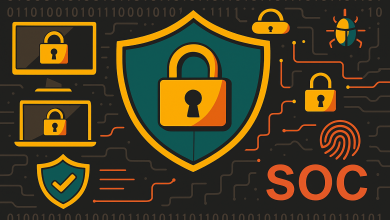
In today’s digital age, even the government is expected to utilise technology in handling transactions and delivering their services. This way, citizens can access records or apply for benefits that concern their livelihoods, health, education, housing, and much more in the convenience of their computers or smartphones. However, not everyone may be well-equipped to make full use of these digital services.
Indeed, it’s imperative to recognize that not all citizens have equal access to or proficiency in utilizing these digital tools. This digital divide can exacerbate existing inequalities, disenfranchising those who are marginalized or underserved. Ensuring inclusion in digital government services isn’t just a matter of convenience; it’s a fundamental principle of equity and social justice. By implementing the following targeted strategies and policies, governments can bridge this gap and ensure that no one is left behind in the digital age.
- Invest in the infrastructure needed to make it work
A digital service is only as good as the infrastructure and technology that back it up. No one would care to use an app if it’s slow or full of bugs, after all. Hence, the foremost concern in making digital government services inclusive is to make sure it is built using reliable and effective systems.
For example, GovTech is currently developing the Singapore Government Tech Stack (SGTS), a technology stack that offers a host of tools and services to help government agencies build digital services with ease. Having a unified technology stack streamlines the creation and deployment of digital services as agencies can simply rely on the available tools in the platform instead of having to develop their own system from scratch.
- Keep citizens informed on digital services available
A big hurdle in the fight for inclusion is lack of knowledge. This can be especially evident for government services, as people in many jurisdictions are already used to just physically going to government offices and queueing to process the document they want. Given this, not everyone may be informed or even willing to try out new systems they haven’t heard of before.
Policymakers and implementers should thus organize digital literacy campaigns to keep citizens informed about which government services they can take advantage of online. Make it easy to understand yet informative so there’s less room for confusion. To this end, utilising popular platforms such as social media organising forums and conferences, and partnering with community organisations to reach diverse audiences and provide hands-on training sessions can further enhance the effectiveness of digital literacy campaigns.
- Partner up with the private sector to encourage public patronage
The private sector can also be tapped for help when it comes to encouraging the public to start using digital government services. This can manifest in various ways, such as asking for the expertise of the private sector to help improve a particular digital service, the inclusion of said services within private businesses, and the possibility of cost-sharing, among others.
An illustration of this concept would involve businesses facilitating e-government transactions. For instance, imagine an individual who isn’t comfortable using online payment portals. They could visit their local store, where a clerk could assist them in processing the necessary bill payment. In this way, individuals can still enjoy the convenience of technology, even if they initially struggle with it
- Ensure accessibility on multiple levels
One of the reasons why the digital divide—that is, the gap between people who have access to technology and those who do not—is so prevalent is because not all digital platforms are accessible, especially for the marginalised. In addition to the poor not even having Internet access to use digital services, there are also individuals with disabilities who may have a hard time using apps or navigating websites.
To ensure inclusion, take into consideration these sectors carefully. Push for easier access to the Internet or more free Wi-Fi spaces. Likewise, for the disabled, make sure e-government platforms are equipped with accessibility features such as text-to-speech option, language support, and other assistive technologies.
- Provide support and assistance that’s easy to reach
In connection with the previous point, make sure that there is an easy-to-access support system for all e-government services. Issues can arise anytime, as not all technology is flawless, so it’s crucial that there’s a support team always ready to troubleshoot issues that citizens may have with the platform. This can be either through a hotline or a chatbot available in the system itself.
This plays a large role in promoting inclusion because it gives citizens more confidence in using the digital government services, knowing that should they encounter any trouble then there’s always someone to help them.
- Build trust by highlighting data security
With constant threats of identity theft and phishing, data security remains to be a major concern among anyone who uses a digital service. Build trust among users by highlighting that their data is secure in any e-government platform. This can tie in with the first point by procuring technologies that will ensure said security. Promoting data privacy and security can also help dispel any misconception that using digital services is unsafe.
Thanks to the wonders of technology, governments all over the world can now reach out to their citizens easier than ever before. Even so, various efforts still have to be made to ensure that these digital services are truly reaching the people it aims to serve. May the key points discussed in this article serve as a stepping stone toward that goal.








